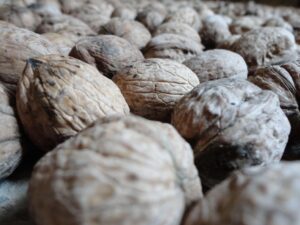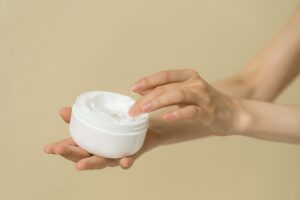Your Daily Skincare Delight

In the realm of natural skincare treasures, shea butter stands as a beacon of nourishment and hydration. Widely known for its versatility, shea butter has found its way into countless beauty routines, offering a multitude of benefits for the skin. One question that often arises is, “Is shea butter good for the face?” Join us as we embark on a journey into the world of shea butter to uncover its beauty benefits for the face and why this natural gem deserves a place in your daily skincare ritual.
Understanding Shea Butter
Shea butter is derived from the nuts of the shea tree (Vitellaria paradoxa), native to West Africa. The process of extracting shea butter involves crushing and boiling the nuts, followed by manual extraction of the rich, creamy substance. What sets shea butter apart is its unique composition, rich in fatty acids, vitamins, and antioxidants.
The Beauty Benefits of Shea Butter for the Face
- Intense Moisturization: Shea butter is celebrated for its unparalleled moisturizing properties. When applied to the face, it forms a protective barrier that helps lock in moisture, preventing dryness and dehydration. This is especially beneficial for individuals with dry or combination skin.
- Rich in Vitamins: Shea butter is a rich source of vitamins A and E, both of which play crucial roles in supporting healthy skin. Vitamin A promotes cell turnover, while vitamin E provides antioxidant protection, helping to combat free radicals that can contribute to premature aging.
- Soothing and Anti-Inflammatory: The anti-inflammatory properties of shea butter make it an excellent choice for calming irritated or sensitive skin. It can be particularly beneficial for individuals with conditions such as eczema or rosacea, providing relief from redness and inflammation.
- Natural Collagen Boost: Shea butter contains compounds that promote collagen production. Collagen is essential for maintaining skin elasticity and firmness, contributing to a more youthful appearance. Regular use of shea butter on the face can help support the skin’s natural collagen levels.
- Scar Reduction: The presence of triterpenes in shea butter has been associated with scar reduction and promoting even skin tone. Whether dealing with acne scars or blemishes, the consistent application of shea butter may contribute to a smoother complexion.
- Non-Comedogenic Properties: Despite its rich texture, shea butter is non-comedogenic, meaning it’s unlikely to clog pores. This makes it suitable for various skin types, including those prone to acne. Shea butter can be a gentle and hydrating option for individuals with oily or acne-prone skin.
Incorporating Shea Butter into Your Skincare Routine
- Pure Shea Butter Application: Start by using a small amount of pure, unrefined shea butter. Warm it between your fingertips and gently apply to your face. Focus on areas prone to dryness, such as the cheeks and forehead.
- DIY Shea Butter Masks: Customize your skincare routine by creating DIY face masks. Combine shea butter with ingredients like honey, aloe vera, or essential oils for a luxurious and hydrating mask. Leave it on for 15-20 minutes before rinsing.
- Nighttime Nourishment: Incorporate shea butter into your nighttime routine for an extra boost of moisture. Apply a thin layer to your face before bed, allowing the shea butter to work its magic while you sleep.
- Under Makeup Primer: Use shea butter as a natural primer before applying makeup. Its velvety texture creates a smooth canvas, helping makeup adhere more evenly and enhancing its longevity.
Choosing the Right Shea Butter
- Unrefined and Raw: Opt for unrefined, raw shea butter to ensure that it retains its natural nutrients. Unrefined shea butter has a nutty aroma and a beige or yellowish color.
- Ethically Sourced: Look for shea butter that is ethically sourced and produced. Many brands emphasize fair trade practices, ensuring that the communities involved in shea butter production receive fair compensation.
- Free from Additives: Choose shea butter that is free from additives, fragrances, and preservatives. Pure shea butter is powerful on its own and doesn’t require additional ingredients to be effective.

Addressing Common Concerns
- Texture and Absorption: Shea butter has a rich and creamy texture that may take some time to absorb into the skin. Start with a small amount and adjust based on your skin’s needs.
- Sensitivity: While shea butter is generally well-tolerated, individuals with nut allergies should perform a patch test before applying it to the face. If irritation occurs, discontinue use.
In the pursuit of a radiant and healthy complexion, the question of whether shea butter is good for the face is met with a resounding yes. This natural marvel, with its deep moisturization, vitamin-rich composition, and versatile benefits, has earned its place as a skincare essential. Embrace the shea butter glow, make it a part of your daily beauty ritual, and witness the transformative effects on your face. From intense hydration to soothing relief, shea butter unveils a world of beauty benefits that invite you to experience the magic of nature’s moisture miracle.

